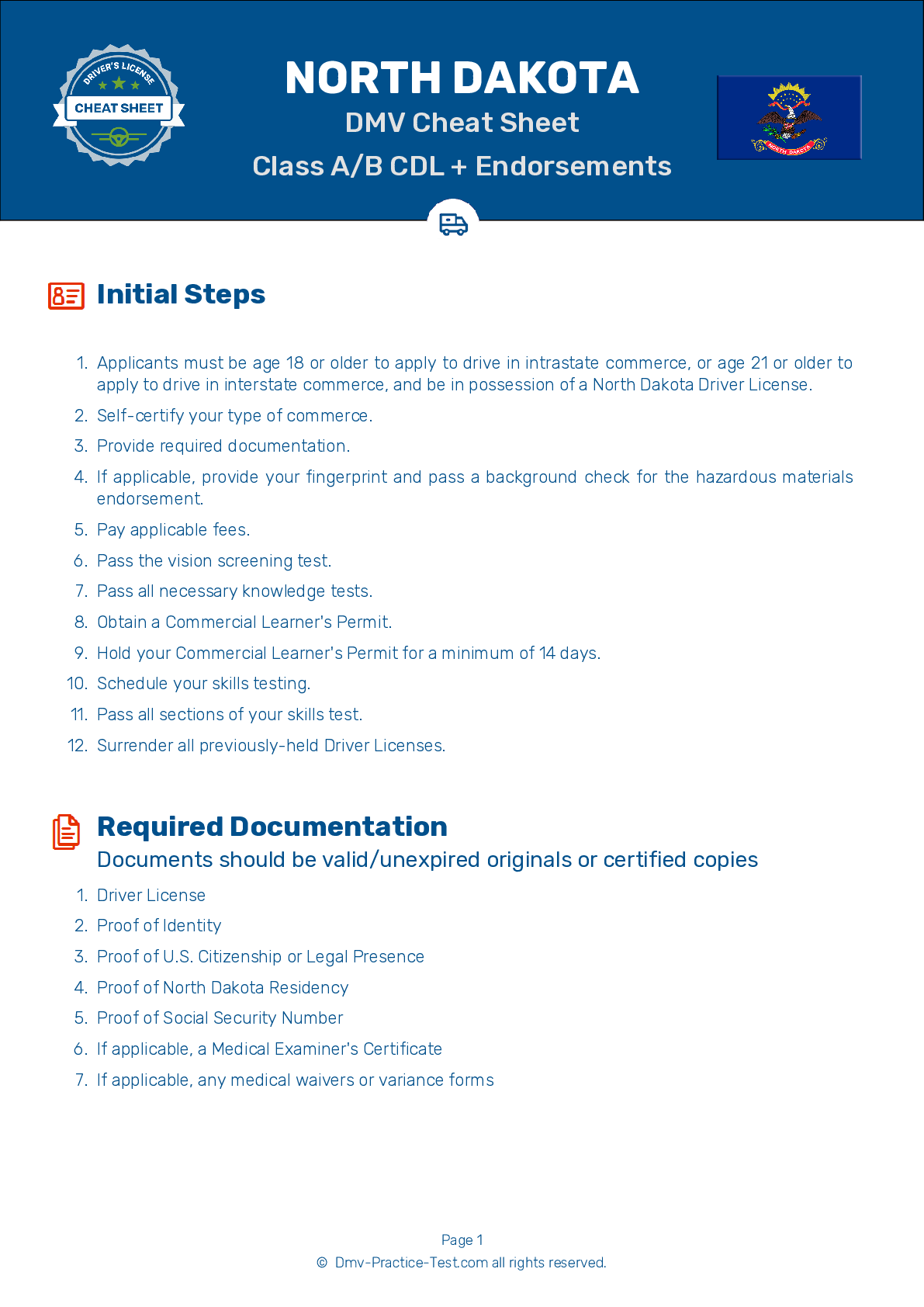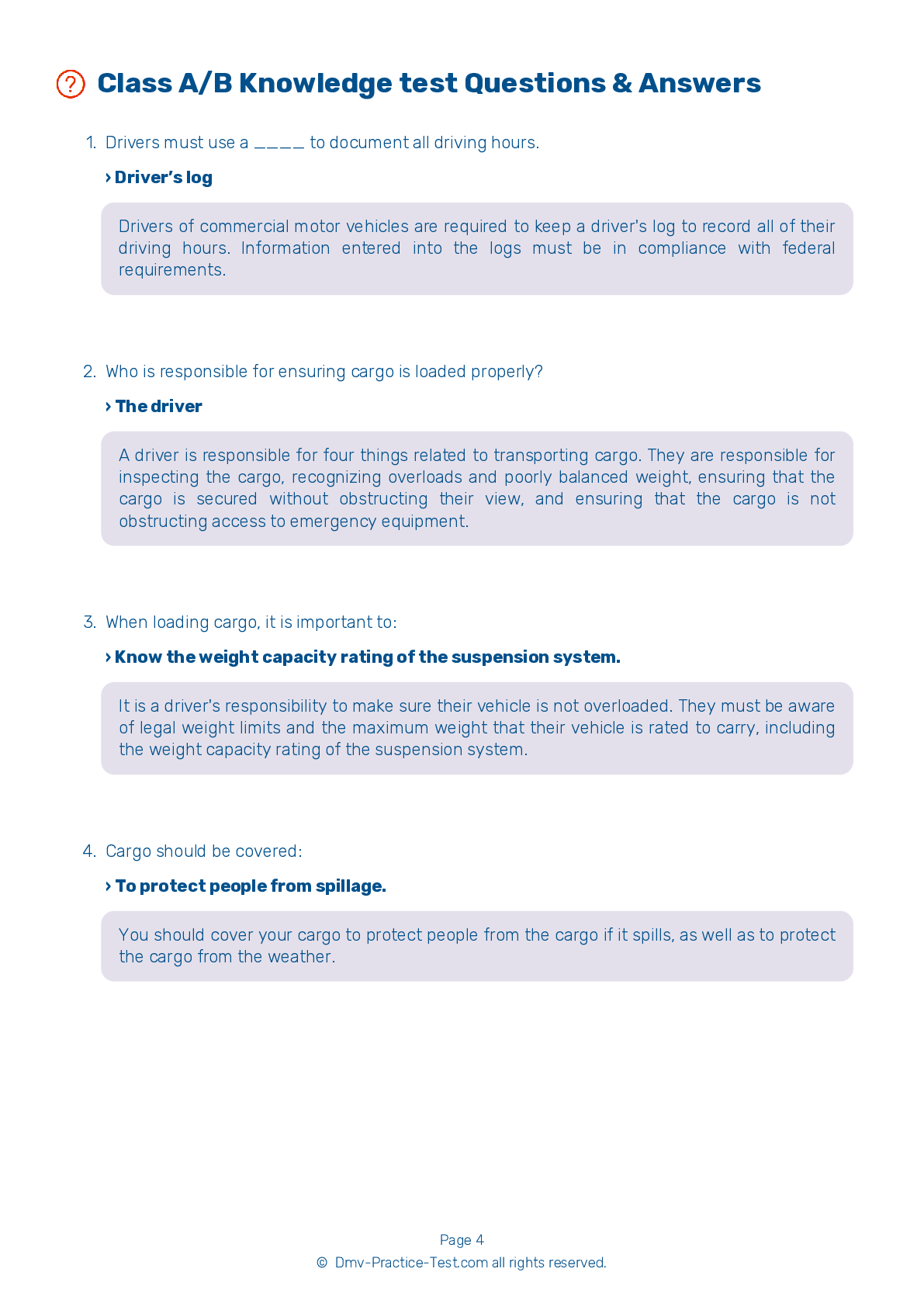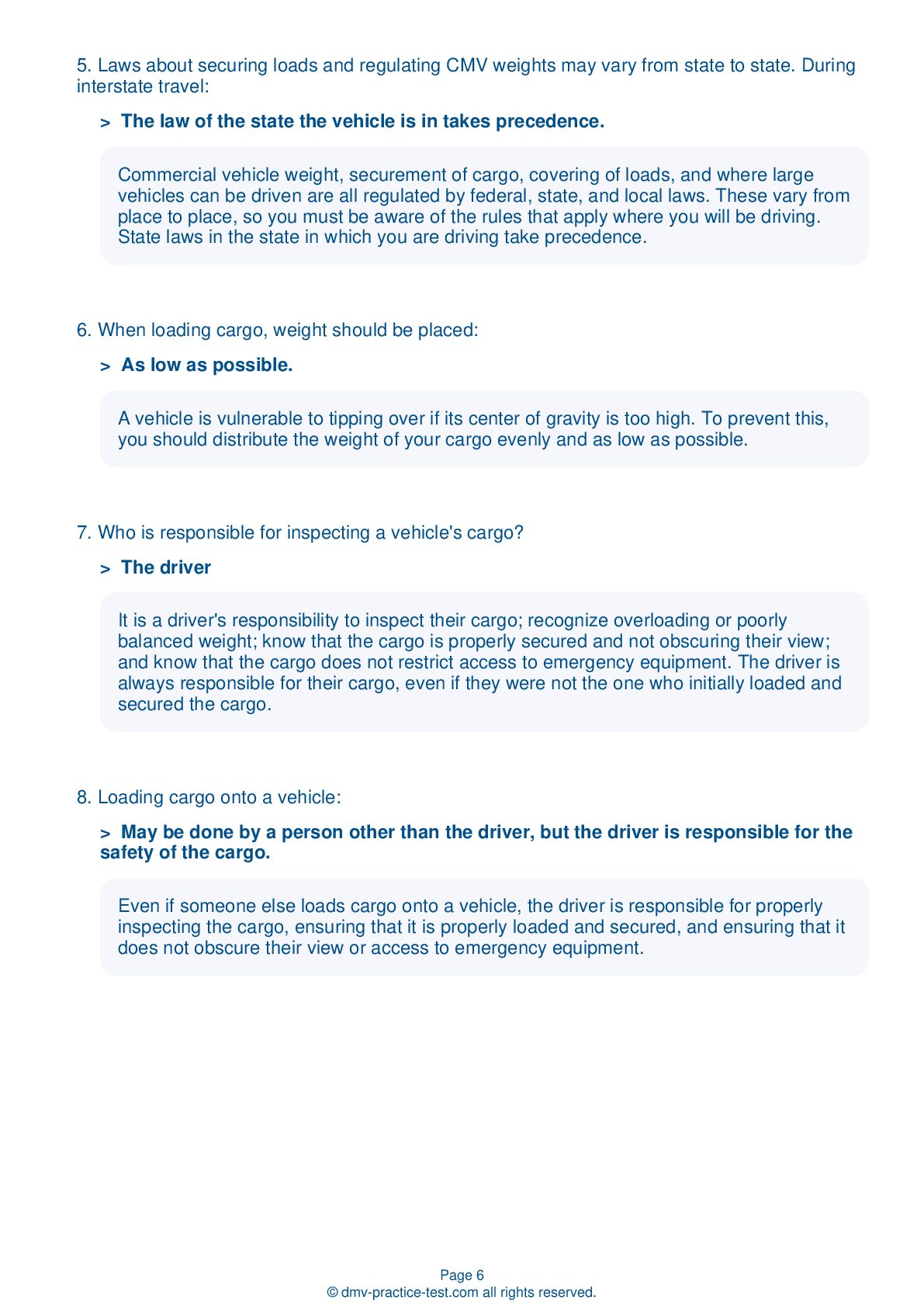Combination Vehicles Practice Test | North Dakota 2025 #2
Train for FREE online with our North Dakota CDL combination vehicle test. The official exam test consists of several obligatory parts, with all of them checking your knowledge of different blocks of road rules. If you need to obtain a ND combination license in 2025, practice as much as possible. Free sample tests published on our website will help you check and improve your knowledge and boost your grades. Please bear in mind that DMV requirements for issuing a combination license may vary from state to state.
1 . An air supply control in its "emergency" position will:
Tractor protection controls in older vehicles may be operated by levers instead of knobs. If an air supply control is set in its "emergency" position, the air supply will be stopped and the trailer emergency brakes will be applied.
2 . A combination vehicle has:
Combination vehicles have two air lines: a service line and an emergency line.
3 . Fully-loaded rigs:
Because the weight of cargo gives them a higher center of gravity, fully-loaded rigs are 10 times more likely to roll over in a crash than empty rigs.
4 . When driving a trailer with ABS, you should:
When driving a tractor-trailer combination equipped with an Anti-Lock Braking System (ABS), you should brake in the same manner that you would if operating a vehicle without ABS.
5 . Using the trailer hand brake while experiencing a trailer jackknife will:
If you are experiencing a trailer jackknife, you can help your tires regain traction by releasing the brakes. Using a trailer hand brake while experiencing a skid will only cause the skid to continue.
6 . When coupling a trailer:
When coupling, make sure you couple matching glad hands. They are often color-coded to help drivers avoid mistakes. Typically, blue is used for service lines and red is used for emergency lines.
7 . If unsure if a trailer is equipped with ABS, you can:
Trailers and converter dollies built on or after March 1, 1998 are required to have Anti-Lock Braking Systems (ABS). This will be indicated by the presence of a yellow malfunction lamp. You can determine if older trailers have ABS by checking under the trailers for ECU and wheel speed sensor wires coming from the back of the brakes.
See the exact questions that will be on the 2025 North Dakota DMV exam.
99.2% of people who use the cheat sheet pass the FIRST TIME
Lillian MCcranie explains how our CDL study guide was helpful in passing the exam and recommends it to everyone.
Cameron tells us how he purchased the CDL exam, and found it to be a useful tool which helped him pass the exam and find a job.



